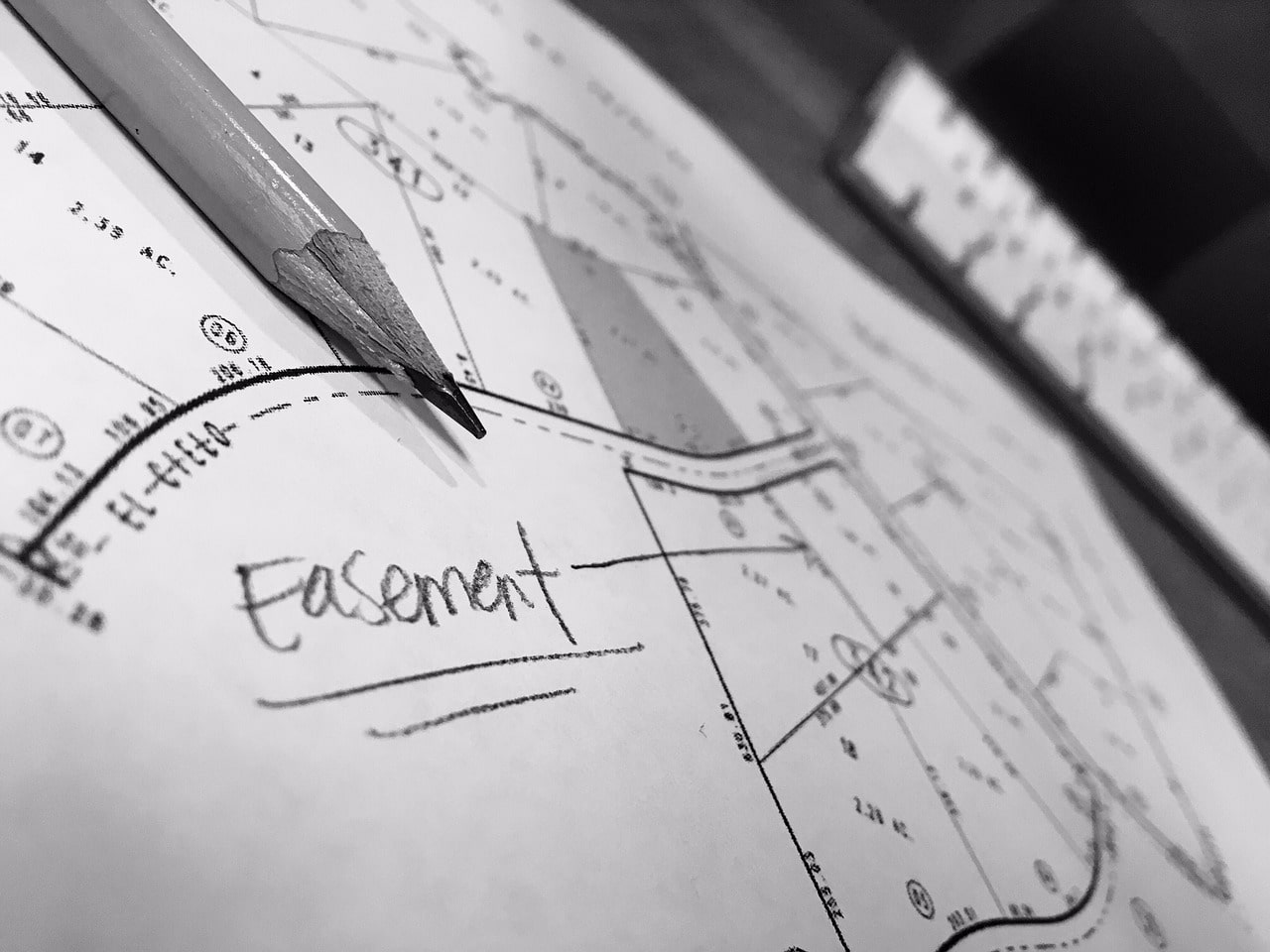The Nuts and Bolts of Easements
What is an Easement?
An easement is the right to use the land owned by another for some designated purpose.
Such uses typically include ingress/egress, rights-of-way, utility, or water access. An easement holder’s use and rights are known collectively as a “servitude,” and the subject property burdened by the servitude is the servient estate.[1]
Affirmative vs. Negative Easements
An affirmative easement gives the easement holder positive rights to do something on the servient estate. On the other hand, a negative easement restrains the owner of the servient estate from undertaking some purpose vis-à-vis the servient estate which is otherwise lawful to do. An agreement not to develop a tract of land to preserve an easement holder’s scenic view is an example of a negative easement.
Rights and Obligations
An easement holder is deemed to have all rights necessarily incident to the enjoyment of the easement and its servitude, and the owner of the servient estate may not obstruct, interfere, or otherwise encroach upon the easement holder’s use and enjoyment.
What are the Different Types of Easements?
There are two general categories of easement:
Appurtenant Easements
An easement is "appurtenant" if it is attached to the dominant estate and runs through subsequent conveyancing.
Easement In Gross
An easement is "in gross" if the easement rights are of a nature strictly personal to the owner of the dominant estate.
Easement rights are never presumed to be in gross whenever they can be fairly construed to be appurtenant to the land.

When are Easements Created?
Under Indiana law, easements may be created by grant, prescription, or implication.
Easement by Grant
An easement by grant is the most common. Such easement arises by way of a deed or contract, and the scope of the easement holder’s rights is controlled by the governing terms of the instrument. Easements created by deed or contract are usually recorded with the county recorder’s office to give constructive notice to interested parties of their existence.
Prescriptive Easements
Prescriptive easements are created by the operation of law against a party having a title. Prescriptive easements are generally disfavored in law. To be recognized, a party claiming a prescriptive easement must show, by clear and convincing proof, their “actual, hostile, open, notorious, continuous, uninterrupted adverse use” of the servient estate for twenty years under some claim of right. Thus, a party claiming the existence of a prescriptive easement must show the following evidence before a prescriptive easement is deemed existing:
- Control
- Intent
- Notice
- Duration
Implied Easements
Like prescriptive easements, implied easements are also recognized in law. Implied easements are further divided into easements of necessity and easements by prior use.
Easement of Necessity
An easement of necessity will be implied in law when land, previously held intact by common ownership, has been severed and, as a result, part of the land is left without access to a public road. If the party alleging easement by necessity maintains any other means of accessing the land, he/she may not claim a right to pass over the land of another and no easement rights are created. An easement by necessity is commonly created when a landowner conveys a parcel of real estate completely bounded by the landowner’s remaining property.
Easements by Prior Use
An easement of prior use will be implied where a landowner imposes an apparent permanent and obvious servitude on one part of the land in favor of another part and which use is continuing when the land is later caused to be severed and if the servitude is reasonably necessary for the fair enjoyment of dominant estate. While the focus of a claim for an implied easement by necessity is the fact of absolute necessity, a claim for prior use is the intention that a prior use should continue.
How are Easement Locations Selected?
In accordance with Indiana law, the owner of the servient estate may select the specific location of the easement if this is not specified within the instrument creating the easement (if the servient owner fails in this regard, the easement holder may then designate the location of the easement).
Location Requirements
In all such cases, the easement location must be reasonable for both parties given the nature of the easement and the circumstances existing; such placement cannot unreasonably interfere with the enjoyment of the servient land or encroach upon, or interfere with, the property of others.
Improvements and Modifications
If at the time an easement is created, the servient estate is unfit for its actual purposes, the easement holder may make such alterations, repairs, and improvements to the servient land as will give effect to the easement, including, by way of example, the construction of roads, drainage systems, and other facilities for an ingress/egress easement which are necessary and appropriate.
An easement establishes important and usually lasting rights on land. Failure to appropriately procedurally establish and accurately describe the precise nature and scope of an intended easement right is the source of significant costly (and acrimonious) litigation in Indiana and elsewhere. Seeking professional advice in real estate law can help avoid unintended uses and servitudes being imposed by the courts. Indeed, as Franklin opined, “[a]n ounce of prevention is worth a pound of cure.”
If you have any questions or needs related to the creation, enforcement, or interpretation of an easement or related land rights, please contact the author or a member of Barrett McNagny’s real estate or litigation group.
About the Author: David C. Pricer is a litigator focusing on commercial litigation, premises liability, professional liability and contract disputes. He has also handled real estate transactions and appeals. He can be reached at 260.423.8866 or dcp@barrettlaw.com.
[1] Whereas the land benefitted by the servitude is the “dominant estate.”
- Published August 22, 2023